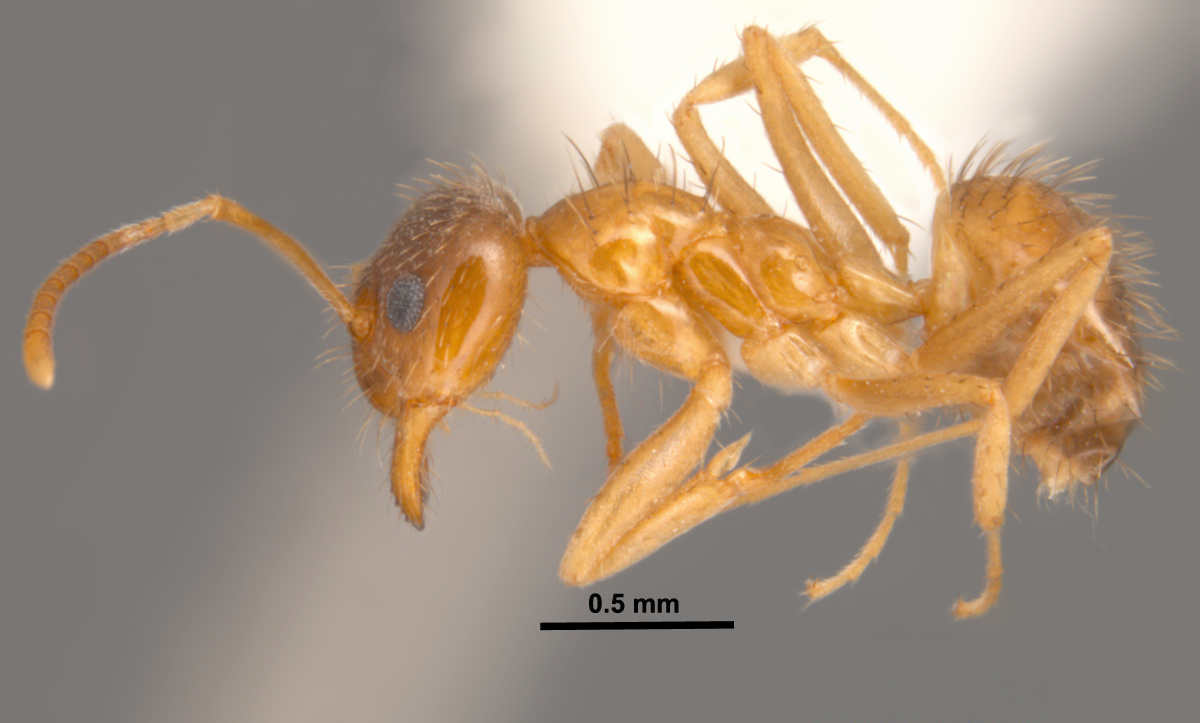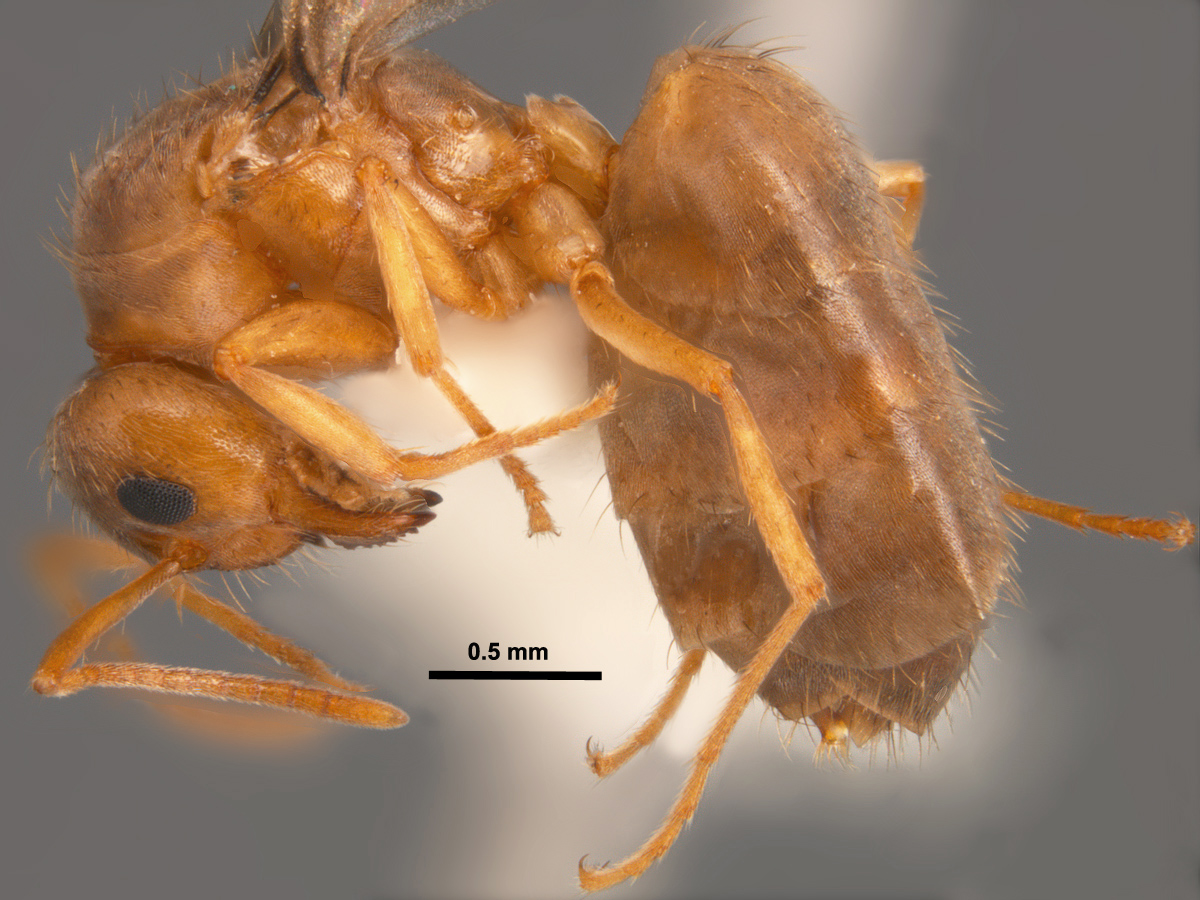Subfamily FORMICINAE Tribe LASIINI Nylanderia arenivaga (Wheeler) |
|
Nylanderia arenivaga, full face view of a worker (click image to enlarge). |
Nylanderia arenivaga, profile view of a worker (click image to enlarge). |
Nylanderia arenivaga, full face view of a dealate queen (click image to enlarge). |
Nylanderia arenivaga, profile view of an alate queen (click image to enlarge). |
Nylanderia arenivaga, profile view of an alate queen (click image to enlarge). |
Crater-like nest entrance of Nylanderia arenivaga |
Introduction Trager (1984) revised the genus, then called Paratrechina, for the continental United States. LaPolla et al. (2010) elevated the subgenus Nylanderia to the generic level, which in effect, meant that all Nearctic Paratrechina species except for P. longicornis were now placed in Nylanderia. In 2012, Kallal and Lapolla (2012) revived the genus and provided an updated key for the Nearctic region. However, there are still some undescribed species in this group that which may be parasitic on other Nylanderia species. These species apparently do not have a worker caste, and the males are unusual in that they have characteristics of both males and workers. Nylanderia arenivaga is a yellow to orangish-yellow species that is typically nests in sandy soils. Identification (from Trager 1984 and Kallal and LaPolla 2012) Female: 4.20-467 mm (TL). Yellow to orangish-yellow with portions of mesosoma and gaster yellowish-brown; cuticle smooth and shiny, but mostly obscured by dense yellowish pubescence; macrochaetae yellowish-brown. Male: 1.77-2.26 mm (TL). Mostly brown with gaster usually darker brown than the rest of body and with tips of legs, mandibles, and antennae yellowish. Cuticle shiny when not obscured by pubescence; pubescence on head moderate, mesonotum with dense pubescence, and gaster mostly lacking pubescence. . Genitalia with long, triangular parameres that curve inward; digiti and cuspides long, slender, and curved toward each other. Nylanderia arenivaga differs from N. phantasma and N. trageri by typically being larger, having more numerous scape macrochaetae, and longer and more flexous macrochaetae in general; from N. querna by having brownish coloration at the tip of the gaster and it habit of nesting in open sandy habitats; and from N. vividula and N. terricola by having denser cephalic pubescence. Biology and Economic Importance Distribution ReferencesKallal, R. J. and J. S. LaPolla. 2012. Monograph of Nylanderia (Hymenoptera: Formicidae) of the World, Part II: Nylanderia in the Nearctic. Zootaxa 3508: 1-64. Lapolla, J. S., S. G. Brady, and S. O. Shattuck. 2010. Phylogeny and taxonomy of the Prenolepis genus-group of ants (Hymenoptera: Formicidae). Systematic Entomology 35: 118-131. Trager, J. C. 1984. A revision of the genus Paratrechina (Hymenoptera: Formicidae) of the continental United States. Sociobiology 9: 49-162.
Links |
|








